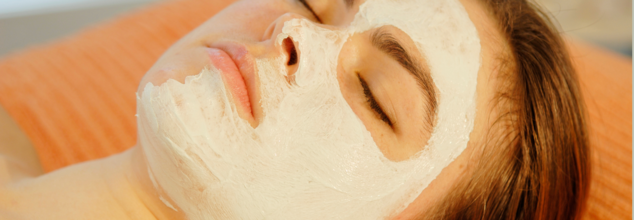- Health Conditions A-Z
- Health & Wellness
- Nutrition
- Fitness
- Health News
- Ayurveda
- Videos
- Medicine A-Z
- Parenting
Turmeric In Your Skincare: Is It the Right Ingredient For You?

Turmeric In Your Skincare: Is It the Right Ingredient For You?
Turmeric, often called "golden spice," has long been a staple in traditional medicine and culinary practices worldwide. Its rich yellow hue comes from curcumin, a powerful bioactive compound known for its anti-inflammatory and antioxidant properties. As modern science continues to explore turmeric’s myriad health benefits, its potential as a skincare marvel has gained significant attention. But is turmeric truly the right ingredient for your skin? Let’s delve deeper into its benefits, applications, and precautions to help you decide.
Turmeric's versatility—from face masks to dietary supplements—makes it a promising ingredient in holistic skincare. Whether you’re seeking to enhance your natural glow, combat acne, or address specific skin issues, turmeric offers a natural, time-tested solution. With proper use and precautions, this golden spice could become a radiant addition to your beauty routine.
Turmeric’s skincare benefits are primarily linked to curcumin, which promotes healing and rejuvenation. For centuries, this spice has been used in beauty rituals for its ability to impart a natural glow and address various skin concerns. Here's how turmeric may enhance your skincare routine:
1. Promotes a Natural Glow
Turmeric’s antioxidant and anti-inflammatory properties can help revive the skin, bringing out its natural radiance. When used in face masks, turmeric can enhance your skin's luster, leaving it looking refreshed and vibrant. A simple DIY mask combining turmeric, Greek yogurt, and honey can be a natural remedy for dull skin.
2. Accelerates Wound Healing
Curcumin is known to decrease inflammation and oxidation, which aids in faster wound healing. It also positively impacts tissue regeneration and collagen production, making it a valuable ingredient for skin recovery. Research published in *Life Sciences* suggests that curcumin-based formulations are especially effective in wound care.
3. Manages Psoriasis Symptoms
Psoriasis, a chronic skin condition marked by red, scaly patches, may benefit from turmeric’s anti-inflammatory qualities. The National Psoriasis Foundation recommends incorporating turmeric into your diet or using supplements to control flare-ups, but always consult a healthcare provider for proper guidance.
4. Reduces Acne and Scarring
Turmeric’s ability to calm inflammation and reduce redness makes it an excellent ally in managing acne. Its anti-inflammatory and antimicrobial properties target acne-causing bacteria, while its scar-reducing effects can help improve skin texture.
5. Effective in Scabies Treatment
An intriguing study in India found that a combination of turmeric and neem effectively treated scabies, a condition caused by microscopic mites. While further research is needed, this highlights turmeric’s potential as a natural remedy for certain dermatological conditions.
6. Addresses Other Skin Issues
Emerging studies suggest turmeric may also help with eczema, lichen planus, and alopecia. However, more research is required to confirm its efficacy in treating these conditions.
How to Use Turmeric for Skin Health
Turmeric can be incorporated into your skincare routine in several ways. Whether applied topically or consumed orally, it’s important to use it correctly to maximize its benefits.
Topical Applications
To use turmeric topically, you can either purchase ready-made skincare products containing turmeric or create DIY masks at home. Here’s a simple recipe:
- Mix 1 teaspoon of turmeric powder with 2 tablespoons of flour (plain or chickpea) and 2 tablespoons of plain yogurt or coconut oil.
- Add 1 teaspoon of honey and mix until a paste forms.
- Apply to your face and leave for 10–15 minutes. Rinse with warm water and pat dry.
Always perform a patch test on your forearm before applying turmeric to your face. This ensures you don’t have an allergic reaction.
Oral Consumption
Turmeric is widely available as a spice, fresh root, or supplement. Supplements often contain curcuminoids, compounds isolated from turmeric. The FDA recognizes curcuminoid supplements as safe in doses of up to 4,000–8,000 milligrams daily.
However, bioavailability—the body’s ability to absorb turmeric—is low. Pairing turmeric with black pepper or a fat source like olive oil can enhance absorption. Always consult a healthcare provider before starting supplements, especially if you’re pregnant, breastfeeding, or taking medications.
Potential Risks and Precautions
While turmeric offers numerous skin benefits, it’s not without potential risks. Here are some considerations to keep in mind:
- Skin Staining: Turmeric can temporarily stain your skin yellow. This is harmless but may be inconvenient.
- Allergic Reactions: Direct contact can cause redness, irritation, or swelling in some individuals. Always do a patch test before use.
- Low Bioavailability: When consumed, turmeric is quickly metabolized, limiting its effectiveness. Taking it with enhancers like piperine (found in black pepper) can improve absorption.
- Drug Interactions: Turmeric may interact with medications, particularly blood thinners and diabetes treatments. Discuss its use with your doctor if you’re on medication.
Is Turmeric Right for Your Skin?
Turmeric’s benefits are undeniable, but its suitability varies depending on individual skin types and concerns. If you’re considering adding turmeric to your skincare regimen, start with a patch test and consult a dermatologist, especially if you have sensitive skin or existing skin conditions.
Nick Jonas Shares Key Lessons To Live A Healthy Life With Diabetes Type 1 For 20 Years

Credits: Facebook and Instagram
This year, Nick Jonas has completed 20 years with type 1 diabetes. This is also the same year when his band, the Jonas Brothers have also hit the mark of 20th anniversary. Speaking to Healthline, Jonas said, "It is crazy hpw it lined up. It has been a wild journey in both... in the Brothers sense, it's been the ride of a lifetime, and we have been so fortunate to be able to do this for 20 years now and to have the support of the world's greatest fans."
He also revealed that he had great and some tough times too living with diabetes. There had been struggles of managing his low, however, he revealed that being the spokesperson of Dexcom, a healthcare company known for its glucose monitoring system, and through his own non-profit initiative Beyond Type 1, he has been joyful. “Overall, I’m really grateful to have been able to be transparent about [type 1] and to connect with all these wonderful people from all regions of the world who are experiencing their own diabetes journey, and it’s a really big thing to feel like you’re a little less alone in it,” said Jonas.
On World Diabetes Day, which was on November 14, Jonas took to the stage during a Jonas Brothers concert and shared the audience his A1C. This is a test that measures one's average blood sugar over the past 2 to 3 months. This number shows how well diabetes has been managed. He shared an inspiring message of hope, while giving a shoutout to his A1C. The concert was attended by Dexcom Warrior community, which makes more than 30,000 people who have been diagnosed with diabetes and may share the same experiences. “It was really special for me to get to use the Jonas Brothers’ platform as a place to speak about something that’s obviously very personal to me and on World Diabetes Day, I think it’s natural to get reflective and to tap into kind of what life looks like for me as a now 33-year-old person living with this disease,” he said.
He also dedicated the song 'A Little Bit Longer', that he had written very early on in his career during his diabetes journey. “It’s a really important time for me to get to speak on stage like that and play a song that I wrote about these experiences when I was 14 and to see the impact it still has to this day with the fan base,” he said.
Living With Type 1 Diabetes
Here are some strategies Jonas uses that helped him manage his diabetes. First off the list is to take the pressure off. “You’re never going to have the perfect day living with this disease and even if you’re super on top of your diabetes management, there are just things that are a little out of your control and being able to take a deep breath, reset, and know that it’s going to be OK on the other side is really important,” he said.
It may seem hard, but he said learning it in the beginning of his diagnosis helped him manage his diabetes. Then comes the care. He has focused on taking vitamins, caring for his skin, and most importantly, staying hydrated. “It’s a simple thing, but the more water I drink, my glucose levels are better. I don’t know exactly why, but I just find that hydrating has a lot of health benefits,” said Jonas. “I didn’t put as much focus on it earlier in my life as I do now, and it’s been really beneficial.”
Physical activity is a must. He walks for 30 minutes daily, or sometimes longer for his physical, mental, and emotional health. “It really centers me and even when it’s cold out, getting out in the fresh air is really important when a lot of my day too, is spent indoors for hours at venue or on a film set or something,” he said.
His focus on self, he says is the most important as he says he relies on his therapist from time to time. "I think it is really important to do that self-work". Lastly, he says everyone who has been diagnosed with diabetes, must take part in the community. “There will be good days, there will be tough days, but you can climb this mountain, and there’s some incredible people out there whose stories will really inspire anybody that’s going through tough moments,” said Jonas.
Taking Venlafaxine? Experts Flag Symptoms That Need Immediate Attention

Credits: Canva
People prescribed venlafaxine are being urged to stay alert to certain symptoms and side effects that may require medical advice from NHS 111 or their GP. Venlafaxine is a widely used SNRI antidepressant. It is mainly prescribed for depression, but doctors may also recommend it for anxiety disorders and panic attacks.
What Is Venlafaxine?
Venlafaxine, sold under brand names such as Effexor and Effexor XR, is a prescription antidepressant classified as a serotonin-norepinephrine reuptake inhibitor. It helps regulate mood by raising levels of serotonin and norepinephrine in the brain, chemicals that play a key role in emotional balance and mental stability.
Doctors Warn People Taking Venlafaxine
The medicine is usually taken as a tablet or capsule. It works by increasing levels of serotonin and noradrenaline in the brain, chemicals that help regulate mood. According to NHS guidance, venlafaxine tends to cause fewer side effects than older antidepressants. That said, it is not completely free of risks.
Most people begin to notice some improvement within one to two weeks, although it can take four to six weeks for the drug to have its full effect.
Venlafaxine Side Effects
Common side effects listed by the NHS include sweating, nausea, a dry mouth, and headaches. These are generally mild and often ease as the body adjusts to the medication.
However, there are other, more serious side effects that may need prompt medical advice. While these reactions are uncommon and affect fewer than one in 100 people, the NHS advises contacting 111 or a GP if they occur.
Venlafaxine Serious Side Effects
NHS advice says you should speak to your GP if you notice unexpected weight gain or weight loss, or sudden changes to your menstrual cycle. This may include spotting, bleeding between periods, or unusually heavy periods.
Patients are also advised to contact their doctor or NHS 111 without delay if they experience any of the following symptoms while taking venlafaxine:
- Yellowing of the skin or the whites of the eyes
- Bleeding gums
- Bruising that appears without explanation or continues to spread
- Thoughts of self-harm or suicide
- Muscle pain or weakness with no clear cause
- Breathlessness, or a heartbeat that feels fast, uneven, or irregular
- Intense feelings of elation, extreme excitement, or restlessness that makes it hard to stay still
- Changes in vision, including blurred eyesight or enlarged pupils
- Coughing up blood
- Blood in urine
- Persistent headaches along with confusion, weakness, or repeated muscle cramps
- Black or red stools, or blood in vomit, which may point to internal bleeding
Adenovirus Or Super Flu? Here Is How To Tell The Difference

Credits: Canva
As adenovirus cases continue to rise globally, health professionals have noticed that this potentially serious infection is sometimes being mistaken for another illness, what many are calling the ‘super flu’.
For those unfamiliar, adenovirus is a DNA virus that gradually affects a person’s upper and lower respiratory tract, as well as other organs. This can include the eyes, digestive system, and kidneys.
Adenovirus Or Super Flu?
According to Dr. Deborah Lee at Dr Fox Online Pharmacy, who spoke to Cosmopolitan: "It spreads when someone breathes in infected droplets, touches the virus and then rubs their eyes, or through the faecal-oral route (not washing hands properly after using the toilet)."
"It moves quickly in crowded spaces where people are close together." She added, "The virus is resistant to soap and many commonly used cleaning products."
Adenovirus: What Are The Symptoms?
The reassuring news about adenovirus is that most people recover within a week or two. Its symptoms are often similar to those of a common cold.
Typical signs include fever, runny nose, sore throat, cough, shortness of breath, and swollen lymph nodes in the neck. In more severe cases, patients may also experience conjunctivitis, ear pain, diarrhea, vomiting, stomach aches, or urinary tract infections.
Certain groups are at higher risk of serious illness. Dr. Lee notes, "Babies and children under five, older adults, pregnant women, and people with weakened immune systems are the most vulnerable."
Although adenovirus symptoms often resemble those of a typical flu, it’s important to know when someone is dealing with the flu—or worse, the current ‘super flu’ that’s circulating widely.
How Does Adenovirus Differ From The 'Normal' Flu?
One way to tell the difference is by how long someone is sick. Adenovirus tends to develop gradually, whereas the ‘normal’ flu often hits suddenly, with high fever and intense symptoms within hours, Lee explains. Common flu symptoms also include a high temperature (38–40°C), severe headache, and extreme fatigue.
Other key differences: adenovirus can occur throughout the year, while flu is mostly seasonal. Adenovirus can also cause pink eye and gastrointestinal problems like vomiting or diarrhea, but it’s less likely to lead to serious complications compared to flu.
What About The 'Super Flu'?
Doctors say it’s not only the regular flu that needs to be distinguished from adenovirus, but also the current ‘super flu,’ which is causing particularly dramatic symptoms.
This infection is caused by the H3N2 virus and tends to be more severe than typical winter illnesses, especially in the UK.
"Past data shows H3N2 has been linked to more hospitalizations and deaths from flu, especially among adults over 65 and young children, compared with other flu types," Lee explained. When comparing the ‘super flu’ to adenovirus, she notes that the symptoms are very similar.
However, she stresses that the ‘super flu’ is considered much more intense. Not only can your sore throat feel agonizing, but aches and pains may be strong enough to confine you to bed.
Adenovirus vs Super Flu: Symptoms Explained
While adenovirus and the so-called ‘super flu’ can feel very similar, there are subtle differences to watch for. Adenovirus usually develops gradually, with fever, cough, sore throat, runny nose, and sometimes pink eye or digestive upset. Most healthy individuals recover within a week or two. In contrast, the ‘super flu,’ caused by the H3N2 virus, hits hard and fast—high fever, intense body aches, severe fatigue, and an agonizing sore throat are common.
Both illnesses can affect vulnerable groups such as young children, the elderly, and immunocompromised individuals, but the super flu tends to bring more extreme symptoms that may require hospitalization. Understanding these distinctions can help people recognize the illness early and seek appropriate care.
© 2024 Bennett, Coleman & Company Limited

